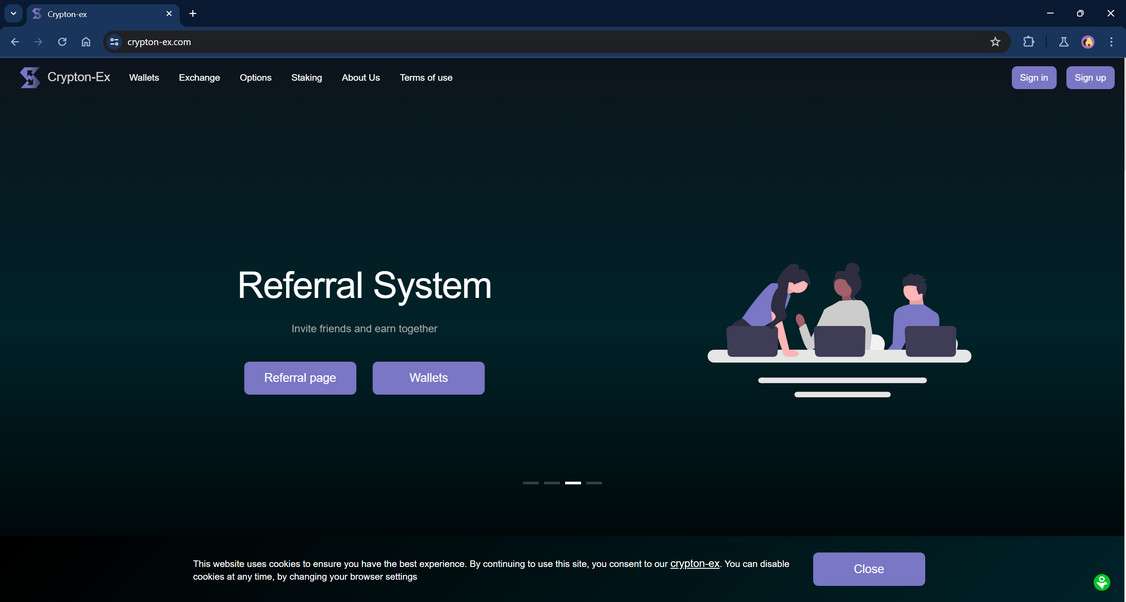A dangerous cryptocurrency scam has emerged on social media platforms like TikTok, YouTube and Facebook, deceiving victims into depositing Bitcoin on fraudulent trading sites. Using deepfake videos or voiceover dubbing, the scam impersonates UFC star Conor McGregor promoting too-good-to-be-true Bitcoin giveaways and bonuses. This guide will provide an in-depth look at how the scam works, how to detect deceptive videos, and steps to take if you lost money or cryptocurrency.





Overview of the Conor McGregor Bitcoin Promo Code Scam
UFC superstar Conor McGregor’s fame and perceived trustworthiness makes him an ideal target for scammers seeking to exploit his reputation. A dangerous new cryptocurrency scam has emerged using deepfake videos of McGregor promoting fake Bitcoin giveaways and bonus codes. This extremely deceptive fraud has already defrauded many victims out of millions in stolen crypto deposits.
The scam works like this:
Scammers distribute videos of a deepfaked Conor McGregor or real interview footage with a fake overdubbed voice narration. In the video, he describes a Bitcoin giveaway opportunity in collaboration with scam sites like Todexy.com, directing viewers to sign up and use a promo code like “Notorious” to claim free crypto.
Victims who use the code see a balance of around 0.31 BTC added to their account, but cannot withdraw it without first depositing funds. Unsuspecting users end up depositing real Bitcoin to “activate withdrawals”, which the scammers immediately steal.
The fraudulent platforms and crypto giveaways do not actually exist. The sites are fake trading fronts to collect deposits into the scammers’ wallets. After accumulating enough funds, the sites disappear and victims have no way to recover their money.
By exploiting McGregor’s fame and perceived trustworthiness, the scammers lend credibility to the ruse that viewers can earn free Bitcoin. But in reality, it is an elaborate scam designed to steal crypto deposits.
How the Conor McGregor Bitcoin Promo Code Scam Works
The criminals rely on convincing celebrity deepfakes, psychological tricks and technical deception. Here’s an in-depth look at how the scam operates.
Step 1: Create Fake Conor McGregor Endorsement Videos
The scammers produce videos using two deceptive techniques:
- Deepfake – Uses AI to replace McGregor’s face/voice with stunning accuracy.
- Voiceover dubbing – Real interview footage dubbed over with a mimicked voice narration.
Both methods result in videos where McGregor seemingly promotes the Bitcoin giveaway.
Step 2: Promote Videos on Social Media
The fake videos spread via YouTube and Facebook ads targeting crypto communities. Scammers also use related TikTok hashtags to reach wider audiences.
Step 3: Direct Viewers to Fake Sites
The videos contain links to fraudulent sites like Todexy.com, Rexorex.com, Xbirex.com etc. Although appearing legitimate, these are fake platforms designed to steal deposits.
Step 4: Instruct Viewers to Use Promo Code
Following McGregor’s directions in the video, users enter a promo code like “Notorious” after registering. This adds a fake 0.31 BTC balance to their account dashboard.
Step 5: Prevent Withdrawals Until Deposit
When targets attempt to withdraw the fake balance, a message states they must first deposit 0.005 BTC to “activate” withdrawals. This tricks users into sending real crypto funds.
Step 6: Steal Deposits and Disable Accounts
After accumulating enough deposits, the scammers disable accounts and take sites offline, stealing victims’ funds. The cycle repeats with new domains.
By exploiting McGregor and hype around crypto giveaways, the scammers convince victims to willingly send payments into their scam operation. But education is the best defense.
The Domains Change But the Scam Remains the Same
A devious element of this deception is that even as authorities disable fraudulent sites promoted using fake Conor McGregor videos, the fraudsters simply shift to new domains and continue the criminal operation unimpeded.
The scammers maintain a library of reusable site templates and deepfake video assets. As needed, they swap in fresh branding, celebrity faces, promo codes and more to create new iterations of the scam. But the fundamental psychological hooks and sequence of the fraud remains unchanged.
Some examples of additional domains that have emerged perpetuating the same celebrity crypto promo code scam format include:
- Bitsowex.com
- Bitxspark.com
- Nevofex.com
- Tokenely.com
- Xbirex.com
And likely dozens more yet to be identified. The sites rely on lookalike names and branding impersonating legitimate firms, making it harder for novice crypto investors to discern their illegitimacy.
While the promo codes, featured celebrities, domain names and bonus amounts may rotate, the core scam tactics persist. Fake celebrity endorsements direct victims to deposit crypto into fake platforms where account access is restricted until a “verification deposit” is received. This allows the anonymous scammers operating the fraud to shift seamlessly between identities.
Although the specifics vary, the psychological manipulation and technical sequence enabling the theft of consumer cryptocurrency deposits remains consistent. But by informing authorities of emerging aliases and educating the public about the recurring scam markers, we can disrupt the ecosystem enabling these repeat offenders to continually defraud consumers.
What to Do If You Sent Crypto Deposits to a Fake Site
If you fell victim and sent cryptocurrency deposits to one of these fake platforms promoted using fake Conor McGregor videos, here are crucial next steps:
- Contact your wallet provider – If you purchased crypto through a mainstream platform like Coinbase, alert them about the fraud. They may cover losses or trace transactions.
- Report to authorities – File a complaint with the FTC, FBI, SEC, and local law enforcement detailing the scam. Provide any evidence you have.
- Inform crypto exchanges – Ask major exchanges to trace the scammer’s wallet addresses and halt transfers/accounts. Supply wallet address info if possible.
- Report social media content – Get fake videos and accounts removed by reporting them as fraud/impersonation. Prevent further spread.
- Watch for recovery scams – Beware messages offering to recover your lost funds for an upfront fee. This usually leads to more stolen money.
- Spread awareness – Post on social media and forums warning others about celebrity crypto endorsement scams. Provide details on how you were deceived.
- Accept the loss – As difficult as it is, come to terms that money sent to scammers directly is nearly impossible to recover. Focus efforts on reporting and stopping them.
Frequently Asked Questions About the Conor McGregor Bitcoin Promo Code Scam
1. What exactly is the Conor McGregor Bitcoin promo code scam?
This scam uses deepfake videos of UFC star Conor McGregor to promote a fake Bitcoin giveaway tied to fraudulent crypto trading platforms. The deepfakes show McGregor instructing viewers to use a special promo code on recommended sites to obtain free crypto funds in their account. However, the platforms are completely fake designed only to steal deposits.
2. How are the fake Conor McGregor videos created?
The scammers use advanced deepfake technology powered by artificial intelligence algorithms. This replaces the real Conor McGregor’s face and voice with a highly realistic synthesized imitation. The results make it appear McGregor is genuinely endorsing the crypto giveaway in a video address.
3. Where do the criminals spread the deceptive videos?
The fake Conor McGregor videos spread via paid ads on YouTube, Instagram, and Facebook targeted at MMA fans, athletes, Irish audiences and crypto enthusiasts. Scammers also leverage TikTok and Twitter using relevant hashtags.
4. What happens when victims use the promo code on the fake sites?
After victims register on the scam platform, entering the promo code adds a fake balance of around 0.31 BTC to their dashboard. No actual Bitcoin is deposited, but this tricks targets into believing they received free crypto from using the code.
5. How do the scammers ultimately steal money from the victims?
When users attempt withdrawing the fake balance, a popup states they must first deposit a small amount of BTC to “verify their identity” and activate withdrawals. This tricks victims into sending real crypto funds to the criminals, which they immediately steal.
6. What are some examples of the fake crypto platform domains?
Some known fraudulent domains are McGregorCoin.com, MMAProfits.com, UFCBTC.com. The sites rely on lookalike names/designs impersonating legitimate brands.
7. What tactics do the criminals use to appear trustworthy?
- Fake reviews
- 5-star ratings
- Certificates
- Celebrity endorsement
- Bonus promises
These techniques lend credibility to deceive victims. Always verify legitimacy.
8. What should I do if I already sent crypto deposits to one of these fake sites?
If you lost funds, immediately contact authorities and crypto exchanges with details. Report fake videos/accounts on social media to get them removed. Warn others publicly about the scam to prevent more victims. Avoid “recovery” scams requesting money to retrieve stolen deposits.
9. How can I avoid becoming a victim of this celebrity crypto scam?
- Independently verify endorsements before acting.
- Thoroughly research any crypto platform mentioned.
- Never make a deposit just to withdraw bonus funds.
- Use unique complex passwords and 2FA.
- Think critically about giveaway claims.
10. Why do scammers focus on impersonating Conor McGregor?
McGregor’s global fame provides the scam credibility and reach. Scammers exploit public trust in celebrities like McGregor to create an illusion of legitimacy and trick fans into willingly sending crypto deposits.
11. Are the celebrity deepfake videos legal?
No. Non-consensual use of a celebrity’s likeness and intellectual property without permission violates personality rights according to the FTC. But the viral spread makes enforcement a challenge.
Stay vigilant for celebrity crypto scams exploiting hype and trust. Verify legitimacy extensively before supplying any personal data or making deposits. Report suspicious promotions to protect the community.
The Bottom Line – How to Avoid the Conor McGregor Bitcoin Scam
The Conor McGregor scam provides an urgent lesson about protecting your cryptocurrency and thinking critically before sending payments anywhere:
- Verify endorsements – Scrutinize celebrity crypto promotions before acting. Confirm legitimacy through official channels.
- Research trading platforms – Vet any exchange and look for reviews, certifications, licenses before creating an account.
- Beware “free crypto” – Genuine platforms do not give away Bitcoin or guarantee bonuses simply for signing up.
- Don’t enable withdrawals via deposits – No legitimate site forces users to deposit funds before withdrawing account balances.
- Report suspicious activity – Notify authorities about potential frauds and help bring scammers to justice.
Stay alert for similar cons impersonating celebrities and exploiting hype around cryptocurrency. Share knowledge about these deceptive tactics to protect your community from predatory scammers.










